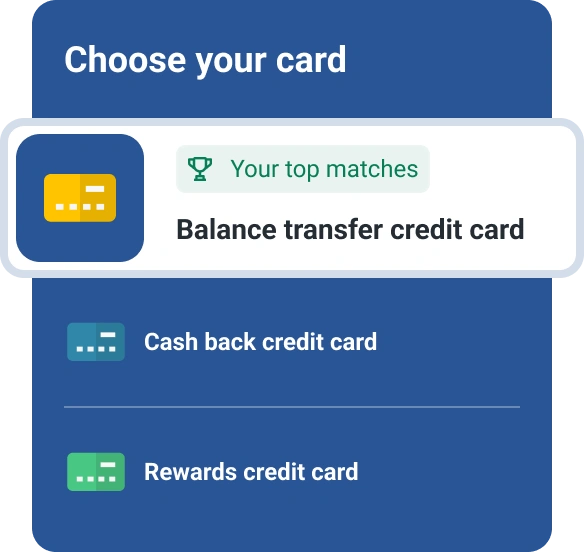Can You Make Purchases on a Balance Transfer Credit Card?
Quick Answer
It’s possible to make purchases on a balance transfer credit card, but there are some disadvantages:
- You’ll pay interest if purchases don’t have a 0% intro APR
- Paying off the balance could be challenging
- Your credit score may be affected

You can use a balance transfer card to make purchases, but it's typically unwise to do so unless you can afford to immediately repay the full balance. Purchases may not benefit from the same 0% APR terms that your transferred balance does. Making purchases after transferring a balance may increase your interest cost and the time it takes to pay off the balance.
What Is a Balance Transfer Card?
A balance transfer credit card allows you to move the balance of one or more credit cards to another, and it's typically done to take advantage of the terms and conditions of the new card. Balance transfers are commonly used to consolidate credit card balances and save money on interest by taking advantage of a lower annual percentage rate (APR).
Many balance transfer credit cards attract new customers with a temporary 0% intro APR offer. In some cases, the promotional interest rate includes both balance transfers and purchases. This deal would allow you to carry both types of balances interest-free.
If you carry a purchases balance on a card that only offers the 0% APR on balance transfers, you may lose the benefit of the promotional rate. When you carry balances with different APRs—for example, a transfer balance at 0% and a purchase balance at the regular APR—your monthly payment may be split between balances. Card issuers apply any payments above the minimum payment to the balance with the highest APR. That would be the purchase balance in our example.
What Are the Downsides of Using a Balance Transfer Card for Purchases?
You may be interested in using your card for purchases after you've transferred a balance, for instance to earn a welcome bonus or ongoing credit card rewards. However, making new purchases before paying off the balance transfer comes with some disadvantages.
- You may be stuck paying interest on purchases. Purchases made on a card with a transferred balance don't get a grace period from interest since you started the billing cycle with a balance. Interest will start accruing on purchases right away and you'll have a finance charge even if you pay off your purchases balance. To completely avoid interest on purchases, you'll have to pay your full balance including the balance transfer each month.
- You may struggle to pay off the balance transfer. When you carry balances with different interest rates, card issuers can apply the minimum payment at their discretion. At most, only your minimum payment will be applied to the balance transfer. If you have a 0% APR balance and a purchases balance at the regular APR, the transfer balance will only go down a small amount each month.
- Your credit score may be affected. Using more of your available credit for purchases raises your credit utilization ratio, which can cause your credit score to fall.
The Best Ways to Use a Balance Transfer Card
When done correctly, a balance transfer card can be a smart way to pay off high interest rate balances. Here's how you can maximize a balance transfer card.
- Understand the terms and conditions of the transfer. Terms vary between credit cards, so pay close attention to the length of the introductory period and the ongoing APR after the promotional rate expires. Understand whether the 0% APR also applies to purchases.
- Review the balance transfer fee. Your fee will likely be a percentage of the amount transferred, which means balance transfer fees can get expensive. Before completing the transfer, make sure it's worth it by comparing the fee to the amount of interest you'd pay based on your current APR and monthly payment.
- Have a repayment plan. Paying off the transfer balance by the end of the promotional period gives you the maximum interest savings. You can calculate your minimum monthly payment by summing the balance and the transfer fee then dividing that amount by the length of the introductory period.
- Avoid new purchases. Mixing balances with different interest rates on your balance transfer card complicates the repayment process. Even purchases on your other credit cards reduces the amount you can afford to pay toward the balance transfer.
The Bottom Line
Though it's technically possible to make purchases on a balance transfer, it's not the best move if the promotional APR only applies to balance transfers. Experian can help you quickly compare different balance transfer offers to find a credit card that offers a 0% intro APR on both balance transfers and purchases.
Your credit score plays a role in getting approved for the best balance transfer credit cards. Getting your free credit report and score from Experian can help you estimate which credit cards you'll likely be approved for.
Best balance transfer cards
Need to consolidate debt and save on interest? See if you qualify for intro offers like 0% intro APR up to 21 months based on your FICO® Score.
See your offersAbout the author
LaToya Irby is a personal finance writer who works with consumer media outlets to help people navigate their money and credit. She’s been published and quoted extensively in USA Today, U.S. News and World Report, myFICO, Investopedia, The Balance and more.
Read more from LaToya

